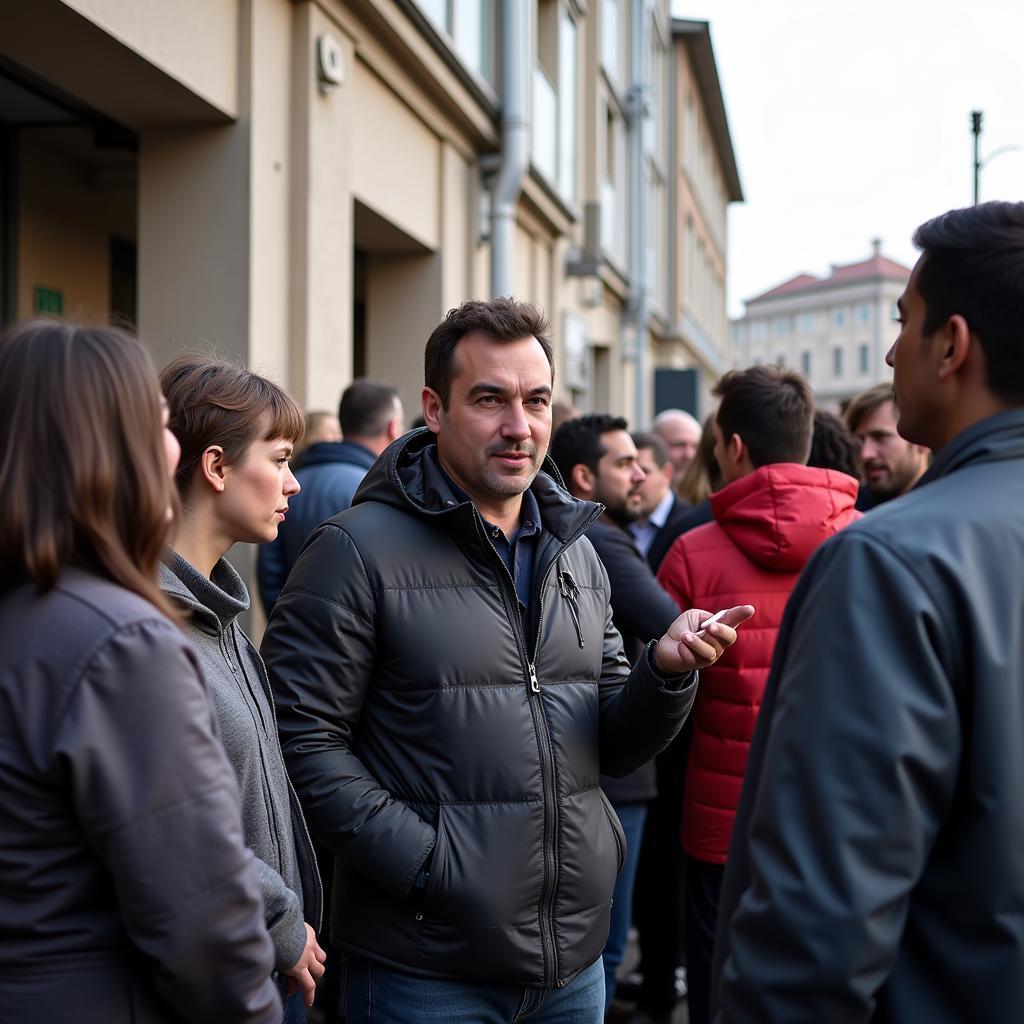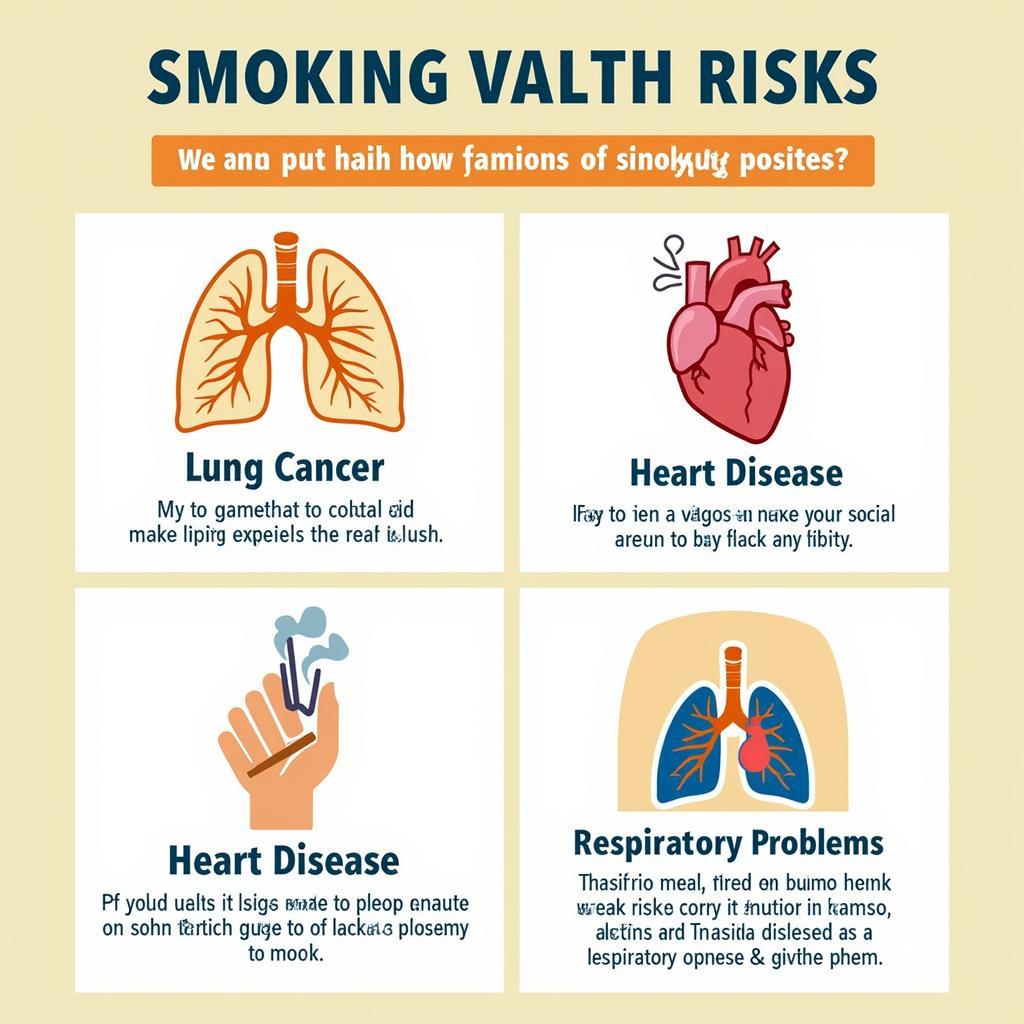The term “Smokers Society” often evokes images of a closed-off group, shrouded in a haze of smoke. However, this perception overlooks the human element within these communities. It’s crucial to remember that behind every cigarette is a person with their own story, motivations, and struggles. smoke society midtown
Exploring the Dynamics of a Smokers Society
What drives individuals to gather in these spaces? Often, it’s the simple human need for connection. Shared rituals, like lighting a cigarette, can foster a sense of camaraderie. These groups, often formed organically, offer a space for individuals to share experiences, unwind after a long day, or simply enjoy each other’s company. This doesn’t mean we condone smoking, but understanding its social context is crucial to fostering empathy.
While the health risks of smoking are undeniable and should always be addressed, it’s important to approach this issue with empathy and understanding. Shaming or ostracizing smokers is unlikely to lead to positive change. Instead, promoting open conversations and providing support for those who wish to quit can be more effective. What role can we play in fostering a healthier “smokers society”?
 People gathering outside a building, some smoking
People gathering outside a building, some smoking
The Human Element Behind the Smoke
Every individual within a “smokers society” has their own unique narrative. Some may have started smoking due to peer pressure, while others may see it as a way to cope with stress or anxiety. Understanding these individual stories can help us break down stereotypes and build bridges of understanding. What are the individual motivations behind smoking?
Bridging the Gap: Promoting Health and Understanding
How can we, as a society, promote healthier choices within these communities? One approach is to focus on harm reduction strategies. Providing access to resources such as nicotine replacement therapy, counseling, and support groups can empower individuals to make informed decisions about their health. Open dialogue and education are key to changing perceptions and behaviors. What resources can we offer to support smokers?
 People sitting in a circle, talking, support group setting
People sitting in a circle, talking, support group setting
Building a More Inclusive Society
It’s crucial to remember that the goal is not to isolate or judge smokers, but to create a more inclusive society that supports individuals in making healthier choices. This includes promoting smoke-free environments while also respecting the rights of individuals who choose to smoke. How can we balance public health concerns with individual rights?
Shifting the Focus: From Judgement to Support
Instead of viewing “smokers society” as a separate entity, we should strive to integrate them into the larger community. By fostering a culture of empathy and understanding, we can create an environment where individuals feel supported in their journey towards better health.
The Importance of Education and Awareness
Raising awareness about the health risks of smoking is essential, but it’s equally important to address the social and emotional factors that contribute to smoking behavior. Educational campaigns should focus on providing accurate information, debunking myths, and promoting healthy coping mechanisms. What are some effective ways to raise awareness about the dangers of smoking?
 Informative poster illustrating the health risks of smoking.
Informative poster illustrating the health risks of smoking.
Conclusion
The term “smokers society” represents a complex tapestry of human interactions and individual struggles. While acknowledging the health risks associated with smoking, it’s essential to approach the issue with empathy and understanding. By promoting open conversations, offering support resources, and fostering a more inclusive society, we can build bridges instead of walls and work towards a healthier future for everyone. smoke society midtown
FAQ
- What are the long-term health risks of smoking?
- What resources are available for individuals who want to quit smoking?
- How can I support a friend or family member who is trying to quit smoking?
- What are some effective strategies for coping with nicotine cravings?
- How can we create a more inclusive society for smokers and non-smokers alike?
- What role can communities play in promoting smoking cessation?
- What are some common misconceptions about smoking?
Common Scenarios
- A young person starting to smoke due to peer pressure.
- An individual using smoking as a coping mechanism for stress.
- A long-term smoker struggling to quit despite health concerns.
- A family member trying to support a loved one who smokes.
Related Resources
- Visit our website for more articles on health and well-being.
- Explore our resources on addiction and recovery.
Need support? Contact us at Phone Number: 02043854663, Email: [email protected] or visit us at Address: Khu 34, Bac Giang, 260000, Vietnam. We have a 24/7 customer service team.